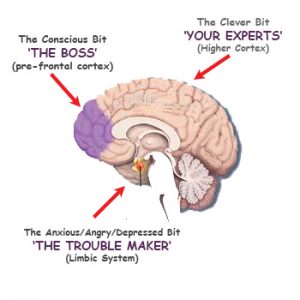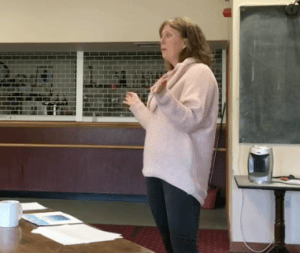Butterfly effect.

The theory that even the smallest step one takes in his/her life can change the course of said life immensely. The name of this theory came to be when a Chaos Theory stated: “It has been said that something as small as the flutter of a butterfly’s wing can ultimately cause a typhoon halfway around the world.”
Theoretically speaking every little thing you do and every little choice you make greatly affects your life.Even the smallest stone, once thrown on a water can cause large ripples.
Have you ever wondered why it’s so hard to stick to your New Year’s resolutions?
It’s often our own brain that prevents us from achieving our goals and not for the reason that you may think.
Are this year’s resolutions the same as the last? Why aren’t you any different if that was how you started 2016?
Well firstly, I’m fairly sure that you are pretty good the way that you are already but if you still think that making some changes will be of benefit:
loose weight,
give up smoking,
get fit,
be more organised or anything else that you have decided you will need more than just a desire.
Your Vision
How will you know when you have reached your goal?
One of the most under-utilised abilities that we have is to imagine our preferred future. Our brains, (complex, with still so much unknown) are fairly simple. They can not differentiate between what we imagine and what is our reality. So if we take time to imagine how things will be when we have reached our goal our brain will start to believe that it is real. And as we learn through repetition, the more you imagine your preferred future the more likely it is to happen. Top athletes will tell you that taking time for positive visualisation can often make the difference between winning and coming second.
How are you going to get there?
Plan. You wouldn’t go on holiday without a plan and all the things that you need (passports, tickets, destination, clothes etc) to enjoy your trip. It’s the same when we are starting a new way of being (creating a habit). You need to have everything that you will need to reach your goal.
“Many people fail in life, not for lack of ability or brains or even courage, but simply because they have never organised their energies around a goal.”
Elbert Hubbard
Part of this planning process must be to break the larger picture (your goal) into small manageable achievable goals.(SMART objectives for those in the know)
The acronym SMART has several slightly different variations, which can be used to provide a more comprehensive definition of goal setting:
S – specific, significant, stretching
M – measurable, meaningful, motivational
A – agreed upon, attainable, achievable, acceptable, action-oriented
R – realistic, relevant, reasonable, rewarding, results-oriented
T – time-based, time-bound, timely, tangible, trackable
Now this is where it’s important to understand how our brains can help or hinder us.
All the while that we are achieving our mini goals we will maintain motivation and enthusiasm and be moving forwards in a positive way. We will be pleased with ourselves.
BUT
What happens when we have a bad day? or we don’t quite achieve the goal that we have set?
Our brain steps in to help us. “Great, that’s good” you may think. Wrong! This is where we need to understand how our brain thinks that it is helping us whilst in fact it is hindering our ability to move forward.
Big image
Our brain
As long as we remain in our Left prefrontal cortex (The Boss) we will be happy and in control and working towards our preferred future.
However, the minute we fail, berate ourselves for that failure, doubt our ability to achieve our goal or generally think negatively we inadvertently stimulate “The trouble maker”. (I would like to add here that “The trouble maker” is crucial for our survival as humans and without it we probably would no longer exist. But, it holds the key to our understanding of why we fail to stick to our resolutions.)
As soon as we have triggered our Trouble Maker it starts to take control of our thinking. To a greater or lesser extent we loose our ability to maintain conscious control. And this is where things start to go wrong: all our Trouble Maker really wants is to ensure our survival and unlike our conscious “Boss” brain it has no intellectual capability at all. It pattern matches past patterns of behaviours (eating high calorie foods, sitting on the sofa rather than going out, old preferred habits etc) that ensured our survival and encourages us to do the same again. It’s at this point that we inevitably loose our ability to achieve our goal.
So what can we do about this?
We can learn to recognise the signs that our “Trouble Maker” has been activated and take action to calm it down and regain our conscious control.
If you are relaxed and stress free there is no reason for the “Trouble Maker” to be stimulated at all. So recognise stress and work towards trying to relax before you do anything else. And try not to get cross when things don’t quite go to plan. Put it down to experience and start again. This way you will retain conscious control and not be impaired.
If you are stressed and struggling focus on reducing the stress before you consider setting yourself any other goals. We all enjoy different things but taking time to do the things that you enjoy will make all the difference between you making the lasting positive change or failing.
Book your free initial consultation now.
Too often we try and commit to too many things and fail at the first hurdle because of our unrealistic expectations. Start small…tiny even, and notice the domino or butterfly effect it will have.
Having trouble mastering this? Book some sessions with me. The diary is filling up fast so don’t miss out. I’m offering a free Initial Consultation this January 2017 too. A little help goes a LONG way!





